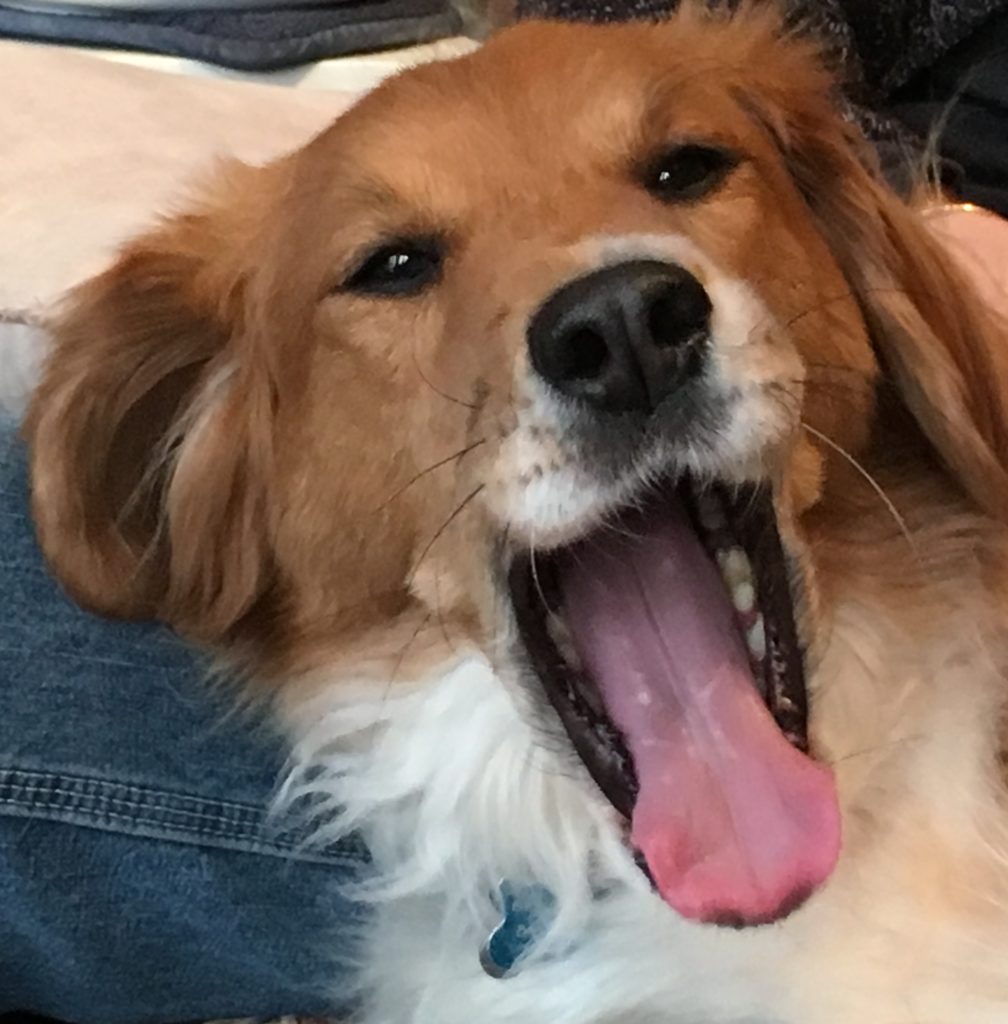Beware the Rise of the TODDLER, excerpt Chapter Twelve, Please Don’t Bite the Baby

If your dog growls at your baby/toddler/or older child, there are a number of steps to take. Some are in the moment. And others are long term.
In the moment…
- The first thing is to use a preconditioned escape route to get the dog out, or employ one of the increase distance commands like go sniff, touch, or come to put space between your dog and your child.
- Secure the dog in another room, behind a gate, or in a crate.
- Take a breath and console your child if need be.
- Assess. Your dog growling at your child is a wake-up call that lets let you know your dog has a problem with some- thing. It is time to figure out what that is and ask if it can be safely fixed.
Here are a few questions to help determine what made your dog growl.
» Is your baby new to the home and a totally new experience for your dog?
» Was your child reaching for your dog when the dog was asleep?
» Could your dog be in pain because of a long hike, a misstep when jumping, age, or other factors?
It is easy for us not to be aware when our dogs are in pain.
Typically, we become aware of their pain only when it is so bad that it inhibits their movement, like limping, or they begin to vocalize, like whining. At that point, they are in a great deal of pain.
» Was your toddler chasing the dog into a corner where he felt trapped?
» Was the child simply petting the dog and then the petting turned into fur grabbing, ear tugging, pinching, or eye poking?
» Was your child trying to hug or hugging your dog?
Dogs are not comfortable with most people hugging them.
The act of putting front legs around another dog and holding
on is not a polite or safe thing to do in the dog’s world, so when a human does it, it is pretty scary for them. Many dogs get used to it from their favorite person but not the “outsiders” in their lives, and until your child has earned your dog’s trust, he or she will be one of the outsiders.
» Did your dog have a bone or another resource and thought the child was too close?
Once we know what caused the dog to growl, we can begin to manage future situations.
In some cases, that means teaching the child what is appropriate to do around and to the dog. In other cases, it will mean managing the dog so he is in another room when your child is in a more rambunctious play mood or when your dog has a resource that is important to him. And sometimes, it will be desensitizing and counter-conditioning the dog to the child because your dog is afraid of or doesn’t like kids.
“But I want my toddler to be able to do anything to the dog,” is like saying, “I want my toddler to play safely in the street without my having to worry about cars.”
A study by the Institute of Transportation Engineers has shown us that children develop adult skills slowly and not all at once. A young child who seems mature and tells you that he or she understands to look both ways will still not be able to safely judge the gaps between cars or the actual distance of a vehicle. I am waiting and hoping for similar research into a young child’s ability to read dog body language and accurately judge the dog’s safety. But for now, I suggest we take the same precautions we do to protect small children in traffic and apply them to children and dogs.
There are times and places when playing in the street is fun and safe. There are ages that are better suited to judge that. Until then, as we are waiting for the perfect combination of a safe street and good judgment, we need to manage and guide our children. We need to view the growl from a dog as we would the honk of a horn from a driver letting us know our child is in harm’s way.